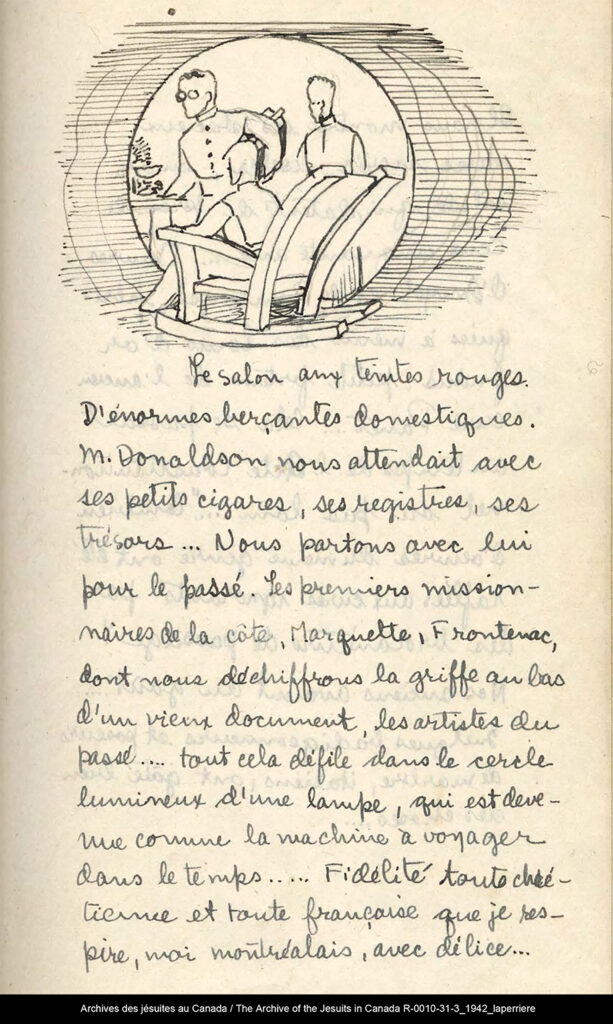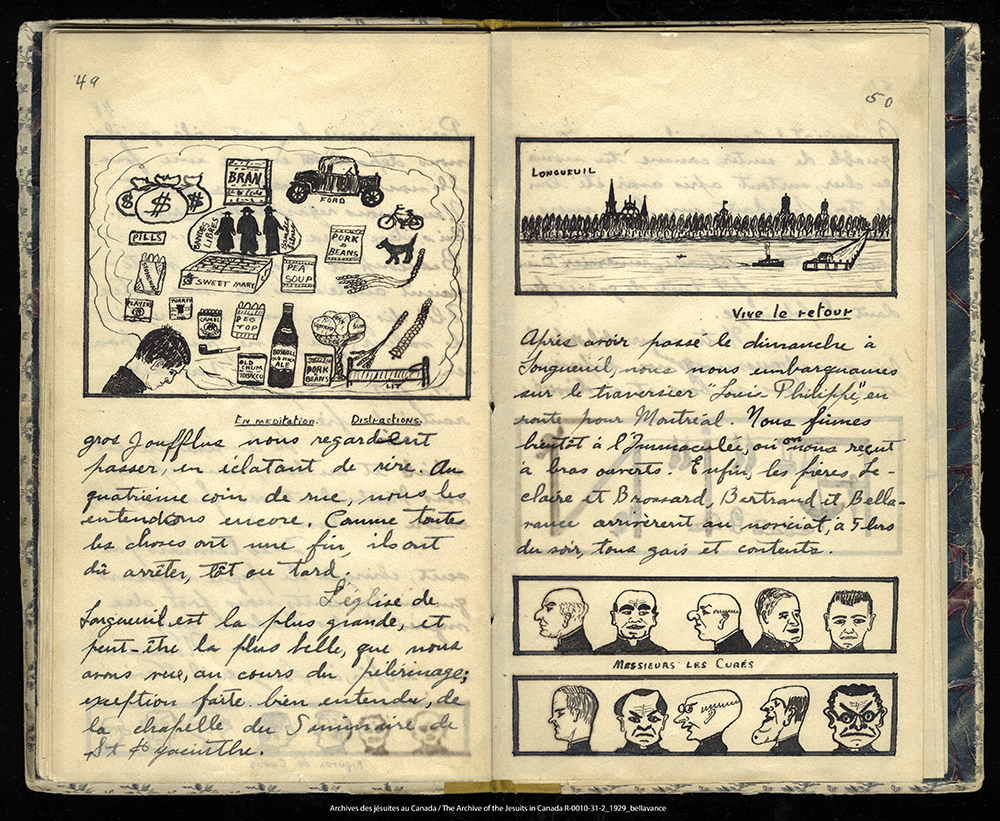The pilgrimage reports give ample details about the journey: roads, transportation, times, events, encounters, and – obviously – weather. Information, personal reflections and anecdotes abound. In that regard, they are comparable to many other travel narratives – dealing with pilgrimages or other types of journeys. The description of various encounters is a prominent feature. These include visits to former professors or colleagues, to candidates, and to family members of Jesuits – parents of the very pilgrims, or of other Jesuits. Other encounters described were more fleeting in nature.

On the one hand, small unsolicited humiliations suffered along the way, especially on the part of taunting youth. On the other hand, the reception of alms, either money, food, or passage, which was accompanied by generosity or scorn. Novices describe some touching encounters:
Tuesday, June 11th [1872] Visited the Convent. There are in one apartment about 10 poor, mostly old women in another 9 little children from the age of 5 to 10, there is one of 2 years. The little orphans were all dressed in their best clothes and drawn up in a line to receive us. After this we entered the apartment of the boarders. We were completely taken by surprise to see the room full of scholars dressed in their holiday costume with a pretty white ribbon across their shoulders.
B[rother] Leblanc gave them an instruction and then they all came forward and laid on a glass plate an offering of money to defray our expenses across the river and for the rest of our voyage.
With the 50 c[ents] which the sisters gave us it amounted in all to several dollars. We told them by our rules we were obliged to beg from door to door if necessary but we could not accept any money but what was requisite for the present day. We accepted their present however and in turn, after consulting them, made an offering of the money to decorate the altar of the S[acred] Heart of Jesus, and left the money in their hands. They expressed the desire of seeing us in full dress i.e. with our capes, bags & sticks. So we returned to the presbytery and put on our ornaments. We distributed, or rather left some medals in the hands of the Sisters to be distributed and asked a congé or at least some hours more of recreation. (Murray, “Pélérinage à St Louis de Gonzague,” 1872)

The core experience depicted in the reports is a discovery of the local Church. The discovery happens in a special way through the encounters with the parish priests and their communities in their own setting, since pilgrims were usually residing in rectories. Description of parish priests abound: learned, old, young, dynamic, edifying, strange, or facetious. A 1929 novice reported being teased by the pastor hosting them, who told them the “truth about the Jesuits”; that Diocesan priests were the glory of the Church, that Pope Clement XIV (who suppressed the Society of Jesus in 1773) was the greatest pope in history, and that Jesuits were living at the expense of others! Most priests were very welcoming to the pilgrims, and many knew Jesuits or had some personal connection to the Society of Jesus. It is not unusual to read vibrant homages to some of them. An 1879 report lauds Fr. Archambault, pastor of the parish of St. Barthélémi, as a man with great oratory talent, but with an even more excellent heart (Bérard and Richard, 1879). Thanks to his zeal, “one sees blooming in all corners of the parish the spirit of family, of religion, of innocence, and of piety.” His preaching is grounded in the Old and New Testament and “inspired in the people an insatiable hunger for the divine word.” He leads a simple life, close to his parishioners, and they have in him the “best of fathers, and the wisest counselor.”
The ministerial dimension of the pilgrimage is highlighted by the detailed description of the activities undertaken by the novices, mostly catechetical instructions. The reports enumerate the activities and describe the people attending them: Exposition of the Blessed Sacrament, children in catechesis groups (especially for first communions), youth groups. Pilgrims could also visit the sick with the pastor, or serve meals to the poor. The ministerial activity constituted the daily backbone of this experience of pilgrimage.